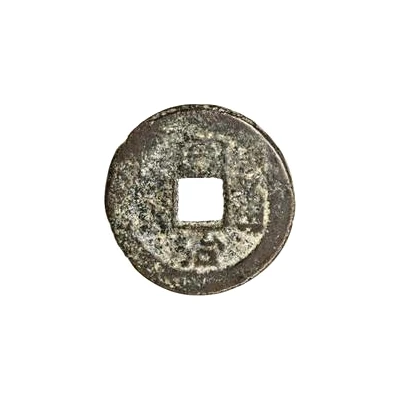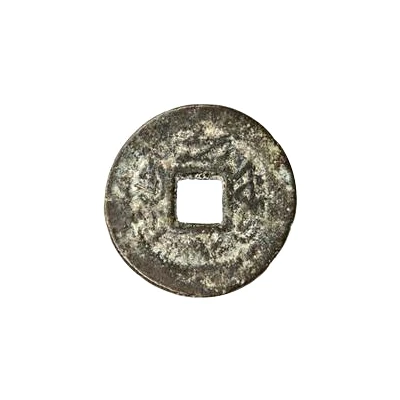1 Cash - Tongzhi Tongbao; Boo-joo; with vertical line ND
| Brass | - | 22 mm |
| Issuer | Empire of China |
|---|---|
| Emperor | Qing dynasty › Tongzhi (同治帝) (1861-1875) |
| Type | Standard circulation coin |
| Years | 1862-1874 |
| Value | 1 Cash |
| Currency | Cash (621-1912) |
| Composition | Brass |
| Diameter | 22 mm |
| Shape | Round with a square hole |
| Technique | Cast |
| Orientation | Medal alignment ↑↑ |
| Demonetized | Yes |
| Updated | 2024-10-03 |
| Numista | N#226685 |
|---|---|
| Rarity index | 100% |
Reverse
Two Manchu words (read vertically) separated by the hole, all with vertical line at various locations.
Script: Mongolian / Manchu
Lettering: ᠪᠣᠣ ᠵᡠᠣ
Translation: Boo-joo
Edge
Plain
Comment
The exact location of the 'Boo-joo' mint is unknown, although the various types of reverse symbols indicate somewhere around Yunnan, Guizhou, or Sichuan. With many symbols also beeing found on Yunnan-fu or Dongchuan coins, it is possible this is a local mintmark from the Yunnan (similar to Boo-dung).Another Boo-joo was used under Xianfeng, although that mintmark does not include a dot. It is possible the dot is correcting the spelling from the Xianfeng coins, or it is an entirely different mint.
Interesting fact
One interesting fact about the Tongzhi coin is that it was the first coin to feature the portrait of an emperor, specifically the Tongzhi Emperor, who ruled from 1862 to 1874. This was a departure from previous Chinese coins, which typically featured symbols or characters representing the emperor's reign. The inclusion of the emperor's portrait was a sign of the increasing influence of Western culture in China during the late Qing period.

